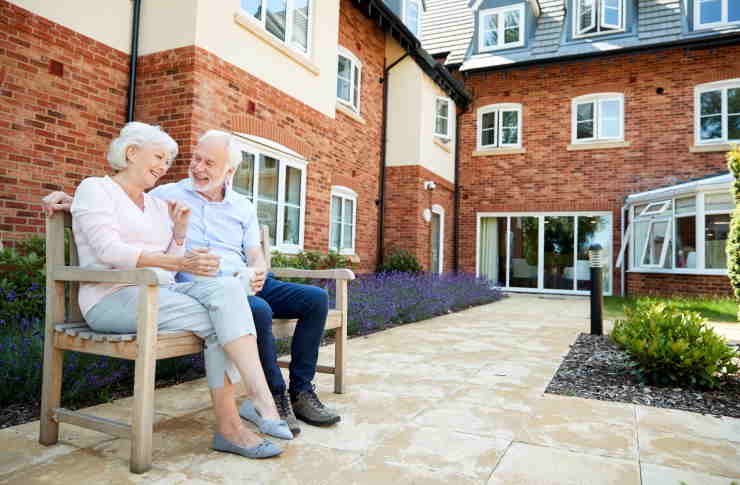Embracing Senior Living: A Guide to Comfortable Retirement
As we age, our living needs evolve, and many seniors find themselves considering the transition to senior living communities. These specialized environments offer a blend of independence, support, and community that can greatly enhance the quality of life for older adults. This comprehensive guide explores the world of senior living, focusing on the benefits, options, and considerations for those looking to make this important life change.

Why do many retirees choose senior living communities?
Many retirees opt for senior living communities for a variety of compelling reasons. Firstly, these communities offer a maintenance-free lifestyle, eliminating the burdens of home upkeep and yard work. This allows seniors to focus on enjoying their retirement rather than worrying about household chores. Additionally, senior living communities provide ample opportunities for socialization and engagement through organized activities, events, and shared spaces. This social aspect is crucial in combating isolation and promoting mental well-being among older adults.
What amenities can one expect in a senior living apartment?
Senior living apartments, particularly two-bedroom units, are designed with comfort and accessibility in mind. Typical amenities include:
-
Open floor plans for easy navigation
-
Wide doorways and hallways to accommodate mobility aids
-
Emergency call systems for quick assistance
-
Kitchenettes or full kitchens for independent meal preparation
-
Individually controlled heating and cooling systems
-
Accessible bathrooms with grab bars and walk-in showers
-
Ample storage space
-
Balconies or patios for outdoor enjoyment
Many communities also offer common areas such as fitness centers, libraries, game rooms, and dining facilities, enhancing the overall living experience for residents.
How does senior living support the health of the elderly?
Senior living communities play a crucial role in supporting the health and well-being of elderly residents. Many facilities offer on-site healthcare services, including regular check-ups, medication management, and access to nursing care. Additionally, these communities often provide nutritious meal options, fitness programs tailored for seniors, and wellness activities that promote both physical and mental health.
The social aspect of senior living also contributes significantly to residents’ overall health. Regular interaction with peers and participation in community activities can help reduce the risk of depression and cognitive decline, which are common concerns among the elderly population.
What types of senior living options are available?
Senior living encompasses a spectrum of options to meet diverse needs:
-
Independent Living: For active seniors who require minimal assistance
-
Assisted Living: Provides help with daily activities while maintaining some independence
-
Memory Care: Specialized care for those with Alzheimer’s or other forms of dementia
-
Skilled Nursing: 24/7 medical care for those with complex health needs
-
Continuing Care Retirement Communities (CCRCs): Offer a continuum of care from independent living to skilled nursing
What are the costs associated with senior living?
The cost of senior living varies widely depending on factors such as location, level of care, amenities, and type of accommodation. Here’s a general overview of monthly costs for different senior living options:
| Type of Senior Living | Average Monthly Cost Range |
|---|---|
| Independent Living | $1,500 - $4,000 |
| Assisted Living | $3,000 - $6,000 |
| Memory Care | $4,000 - $8,000 |
| Skilled Nursing | $6,000 - $12,000 |
| CCRCs | $3,000 - $10,000+ |
Prices, rates, or cost estimates mentioned in this article are based on the latest available information but may change over time. Independent research is advised before making financial decisions.
It’s important to note that these figures are estimates and can vary significantly based on geographic location and specific community offerings. Many seniors finance their stay through a combination of personal savings, long-term care insurance, and in some cases, government assistance programs like Medicaid for those who qualify.
When considering senior living options, it’s crucial to thoroughly evaluate the costs against the services provided and the potential long-term benefits of a supportive living environment. Many families find that the overall value of senior living, including healthcare support, meals, and social engagement, often outweighs the costs of maintaining a private home, especially when factoring in potential home healthcare expenses.
In conclusion, senior living offers a viable and often beneficial option for many retirees seeking a blend of independence, support, and community. By understanding the various types of senior living, the amenities offered, and the associated costs, older adults and their families can make informed decisions about their retirement living arrangements. As the senior population continues to grow, the importance of quality senior living options becomes increasingly apparent, providing a foundation for a fulfilling and comfortable retirement lifestyle.






